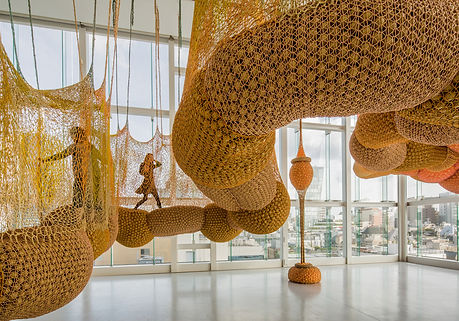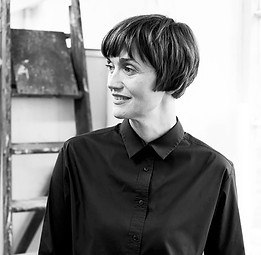LONDON DEBATE
London Debate + live Q&A | Video by Crossmark | 1:00:29 mins
London Debate key summary:
-
We have to acknowledge the world around us, as it shapes us as much as we shape it.
-
The creative community can translate the conversations around climate change into action.
-
A new culture based on justice, equity and collaboration is needed to move forward.
The London Debate (1:00:29 mins) is moderated by Philippe Rahm, Swiss architect and 2020 Summit speaker, and features:
09:35 – Timothy LeCain, Professor of History at Montana State University in Bozeman
19:24 – Clare Twomey, artist
24:09 – Alison Tickell, founder of the non-profit organisation Julie’s Bicycle
33:22 – Panel discussion
46:38 – Live Q&A
The panelists discussed how the ecological crisis forced us to rethink our relationship with the environment. The world around us influences us as much as we influence it, therefore humans should renounce the idea that we are the only creative force on this planet. At the root of the climate crisis is the idea of human supremacy which has resulted in uneven and unsustainable economic growth. A culture change is needed and art can inspire such action, as it opens your heart and can relieve the numbness individuals feel towards the ecological crisis.
We have to acknowledge the constructive contribution of the environment and non-human agents as they shape us as much as we shape them, co-creating the world around us.
Philippe Rahm discusses a new mode of 'climatic architecture' for the future, and invites us to build environments that respond to the given natural conditions instead of creating resource hungry systems. According to Philippe, architects are not the only agents equipped with creative power, since the wind and the heat are also designers. Parameters such as temperature and humidity are thus promoted to become the basis of a new type of sustainable architecture. Professor Timothy LeCain expands on this by referring to the concept of ‘neo-materialism’: humans have to be understood as material creatures whose creativity arises from their interaction with the dynamic things around them, not in distinction to them. Instead of the traditional idea according to which humans control the reality, Timothy continues by acknowledging that “the world

Philippe Rahm, Infrarouge: Portraits of the 21st Century, 2021
is making us as much as we are making it.” The climate crisis made us realise how embedded we are with the environment and how human actions are not without consequences. That humans are shaped by the environment is also confirmed by science: the many bacteria present within our bodies are non-human factors which nevertheless have a huge influence on who we are.
The creative community should address the numbness individuals feel towards the ecological crisis and translate the conversations around climate change into action.

The London based charity Julie’s Bicycle was founded by Alison Tickell with the mission of supporting the creative community to act on climate change. Alison believes that the arts and culture sector is uniquely placed to transform the conversation around climate change and translate it into action. A radical change in cultural activities, policy, investment and in commissioning artistic ideas is needed in order to embed sustainability into the fabric of the arts and society in general. She invites both artists and the greater public to ask themselves the following question in relation to their life and work practices: “is this a regenerative or depleting activity?” The artist Clare Twomey further states that in her experience “art can pierce through the film of resistance that hinders our personal journeys”. By reaching deep into ourselves, art can address the numbness the individual feels towards the ecological crisis.
Clare Twomey, Monument, 2009
The cultural value of human supremacy, which has been celebrated over all forms of life, can be considered as one of the root causes of climate change. A new system based on justice, equity and collaboration is needed to move forward.
Catherine Bottrill from Julie’s Bicycle at the 2020 Verbier Art Summit. Photo by Alpimages.
Alison states that the ecological crisis we face is in fact a cultural crisis. We need to change our culture, which is currently rooted in the belief of human supremacy. We need to bring forward justice and equality towards one another and the environment. In practice, this means that we should work together, collaborate towards (i) a rapid reduction of greenhouse gas emissions to net zero; (ii) a circular economy which rejects endless consumption; and (iii) a commitment to protect biodiversity and wildlife. The system that brought us here can’t accomplish this mission, because it is deeply flawed. Artists, organisations, innovators, policy makers and funders should all rethink their practices and take responsibility in serving their community. The climate crisis calls for a different way of working which promotes collaboration over competition, and ‘pathfinding’ that explores new types of networks and solutions. Timothy concludes by pointing out that ecological thinking doesn’t only require hard sacrifices as “it is not a denial of life, but a celebration of a better life.”


Exhibition Natural History of Architecture, 2021. Photo by Salem Mostefaoui
Join Julie’s Bicycle’s online symposium, where ‘green’ production practices for the art sector will be explored. On 17 June at 5 PM (CEST), a panel of three cultural experts will share their experiences driving dynamic changes in production, reducing their impacts, and distributing responsibility for sustainability throughout the production chain. Register here.
The exhibition Natural History of Architecture, presented under the direction of Philippe Rahm, explores how climate, epidemics and energy have shaped our cities and buildings. The exhibition is on view at the Pavillon de l’Arsenal, Paris until 26 September 2021. Discover more here.


Ernesto Neto, Madness is part of Life, 2013. Photo by Louis Vuitton/Jérémie Souteyrat, courtesy of the artist
The latest book by Timothy LeCain, The Matter of History (2017), develops a new post-anthropocentric understanding of the past, one that reveals how powerful organisms and things help to create humans in all their dimensions; biological, social, and cultural. Read more here.
The new exhibition SunForceOceanLife by our 2019 Summit speaker Ernesto Neto consists of a massive interactive installation that highlights the relationship between the sun and the sea to produce life on Earth. The exhibition is on view at The Museum of Fine Arts, Houston until 26 September 2021. Read more here.
CURRICULUM VITAE

Alison Tickell
Alison Tickell established Julie’s Bicycle in 2007 as a non-profit company helping the music industry reduce its environmental impacts and develop new thinking in tune with global environmental challenges. Julie’s Bicycle has since extended its remit to the performing and visual arts communities, and wider creative sector. With an increasing international profile Julie’s Bicycle is acknowledged as the leading organisation bridging sustainability with the arts and culture. Originally trained as a cellist, Alison worked with seminal jazz improviser and teacher John Stevens as a performer and trainer. She worked for many years with socially excluded young people at Community Music, training professional musicians in teaching, mentoring and business development, and then at Creative and Cultural Skills where she helped establish National Skills Academy for the music industry. Alison also carries out multiple advisory roles at Tonic Theatre, Observer Ethical Awards, Royal College of Arts, D&AD White Pencil Awards, Music Week, Tonic and WOMEX awards.

Clare Twomey
Clare Twomey is a British artist, researcher, and curator that has been advising the Summit team as part of the 2021 Committee. A leading figure in expansive material/participatory practices, she engages with and challenges historic modes of public access to art and museum collections through sculpture, live works and participation. Her artist-led exploration is located in the area of art, clay and craft practices focusing on expanding dialogues of accessibility and sustainability, making original and significant contributions to knowledge. Clare’s work has been exhibited internationally at Tate, London; Victoria & Albert Museum, London; Nelson Atkins Museum, Kansas City; Gardiner Museum, Toronto; and Museum of Modern Art, Kyoto.

Philippe Rahm
Philippe Rahm is a Swiss architect, principal in the office of Philippe Rahm architectes, based in Paris, France. His work, which extends the field of architecture from the physiological to the meteorological, has received an international audience in the context of sustainability. His recent work includes the first prize for the Farini competition in Milan in 2019; the 70 hectares Central Park in Taichung, Taiwan, completed in December 2019; the Agora of the French National Radio in Paris; a 2700 m2 Exhibition architecture for the Luma Foundation in Arles, France. He has held professorships at GSD Harvard University, Columbia University and Princeton University. In 2017, his work was exhibited at both the Chicago and Seoul Architecture Biennials.
Photo by Alpimages

Timothy LeCain
Timothy LeCain is a Professor of History at Montana State University in Bozeman, Montana whose work focuses on the ways in which the New Material Humanism can help us to better understand the past and future of humans and the planet. His latest book, The Matter of History: How Things Create the Past (Cambridge University Press, 2017), develops a bold theoretical and methodological approach that emphasizes the many ways in which a dynamic material environment creates humans, both as biological and cultural creatures. Timothy's first book, Mass Destruction, an environmental and technological history of the giant open-pit copper mines developed in the American West, won the 2010 best book of the year award from the American Society for Environmental History and was chosen as an Outstanding Book of the Year by Choice, the review publication of the American Library Association. He has published numerous articles, op-eds, reviews, and given many invited lectures around the world, including in recent years, China, South Africa, Chile, England, Sweden, Germany, Austria, Norway, and the Czech Republic.
Home


